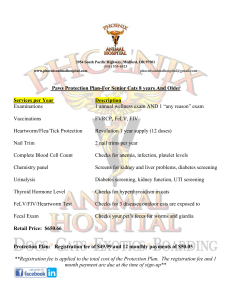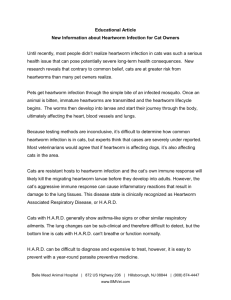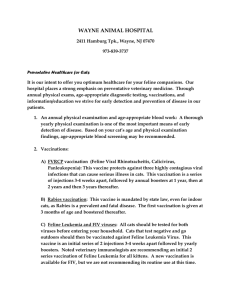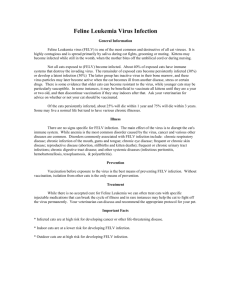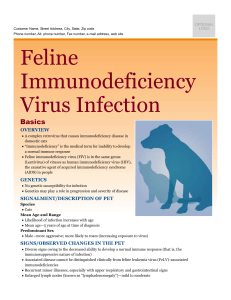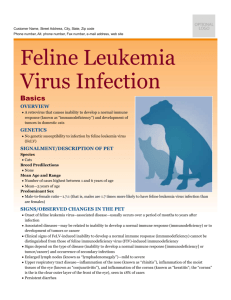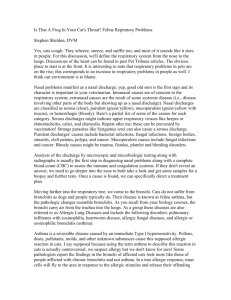PREVALENCE AND RISK FACTORS FOR FELV, FIV, AND
advertisement
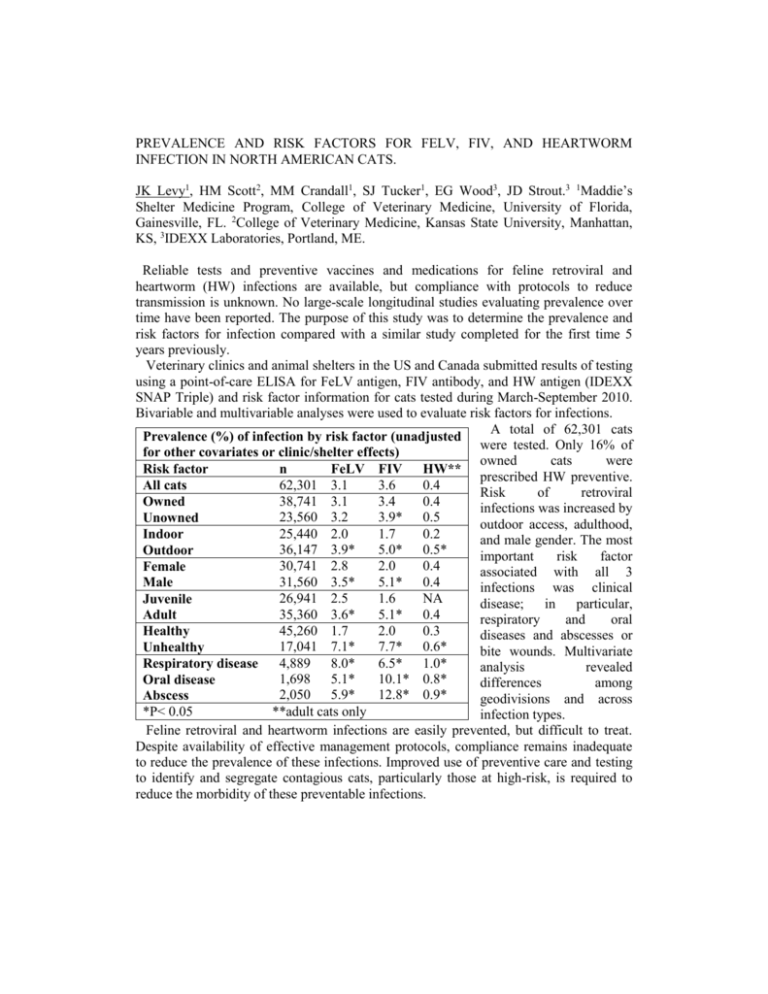
PREVALENCE AND RISK FACTORS FOR FELV, FIV, AND HEARTWORM INFECTION IN NORTH AMERICAN CATS. JK Levy1, HM Scott2, MM Crandall1, SJ Tucker1, EG Wood3, JD Strout.3 1Maddie’s Shelter Medicine Program, College of Veterinary Medicine, University of Florida, Gainesville, FL. 2College of Veterinary Medicine, Kansas State University, Manhattan, KS, 3IDEXX Laboratories, Portland, ME. Reliable tests and preventive vaccines and medications for feline retroviral and heartworm (HW) infections are available, but compliance with protocols to reduce transmission is unknown. No large-scale longitudinal studies evaluating prevalence over time have been reported. The purpose of this study was to determine the prevalence and risk factors for infection compared with a similar study completed for the first time 5 years previously. Veterinary clinics and animal shelters in the US and Canada submitted results of testing using a point-of-care ELISA for FeLV antigen, FIV antibody, and HW antigen (IDEXX SNAP Triple) and risk factor information for cats tested during March-September 2010. Bivariable and multivariable analyses were used to evaluate risk factors for infections. A total of 62,301 cats Prevalence (%) of infection by risk factor (unadjusted were tested. Only 16% of for other covariates or clinic/shelter effects) owned cats were Risk factor n FeLV FIV HW** prescribed HW preventive. 62,301 3.1 3.6 0.4 All cats Risk of retroviral 38,741 3.1 3.4 0.4 Owned infections was increased by 23,560 3.2 3.9* 0.5 Unowned outdoor access, adulthood, 25,440 2.0 1.7 0.2 Indoor and male gender. The most 36,147 3.9* 5.0* 0.5* Outdoor important risk factor 30,741 2.8 2.0 0.4 Female associated with all 3 31,560 3.5* 5.1* 0.4 Male infections was clinical 26,941 2.5 1.6 NA Juvenile disease; in particular, 35,360 3.6* 5.1* 0.4 Adult respiratory and oral 45,260 1.7 2.0 0.3 Healthy diseases and abscesses or 17,041 7.1* 7.7* 0.6* Unhealthy bite wounds. Multivariate 4,889 8.0* 6.5* 1.0* Respiratory disease analysis revealed 1,698 5.1* 10.1* 0.8* Oral disease differences among 2,050 5.9* 12.8* 0.9* Abscess geodivisions and across *P< 0.05 **adult cats only infection types. Feline retroviral and heartworm infections are easily prevented, but difficult to treat. Despite availability of effective management protocols, compliance remains inadequate to reduce the prevalence of these infections. Improved use of preventive care and testing to identify and segregate contagious cats, particularly those at high-risk, is required to reduce the morbidity of these preventable infections.
